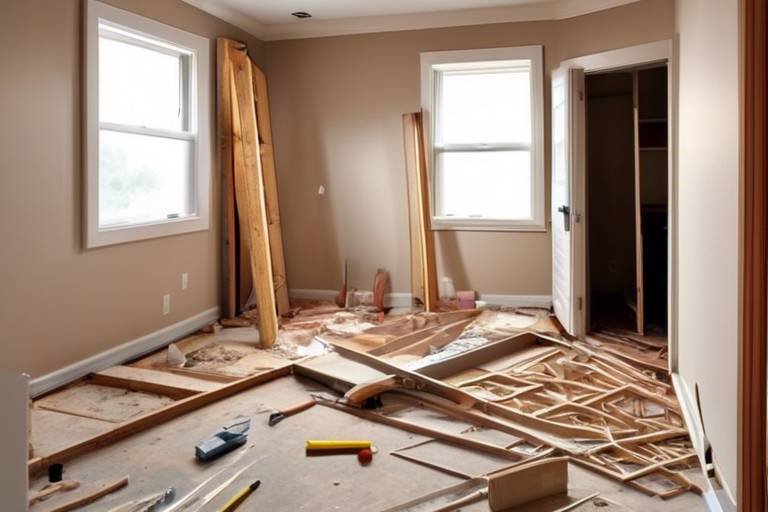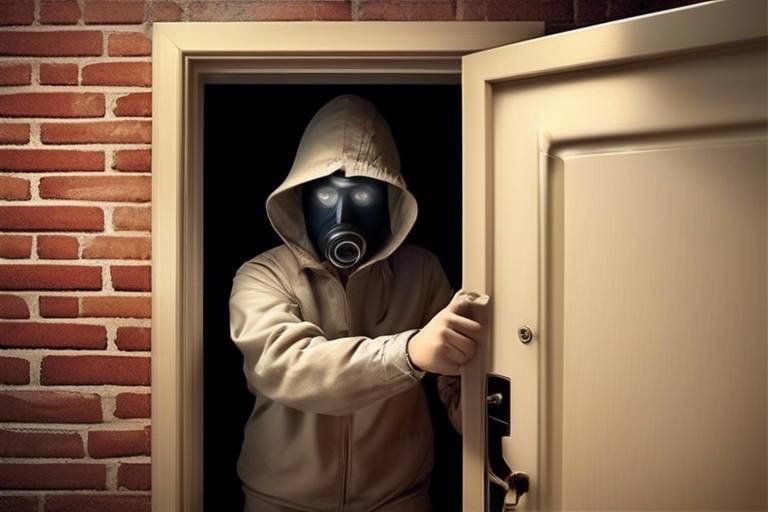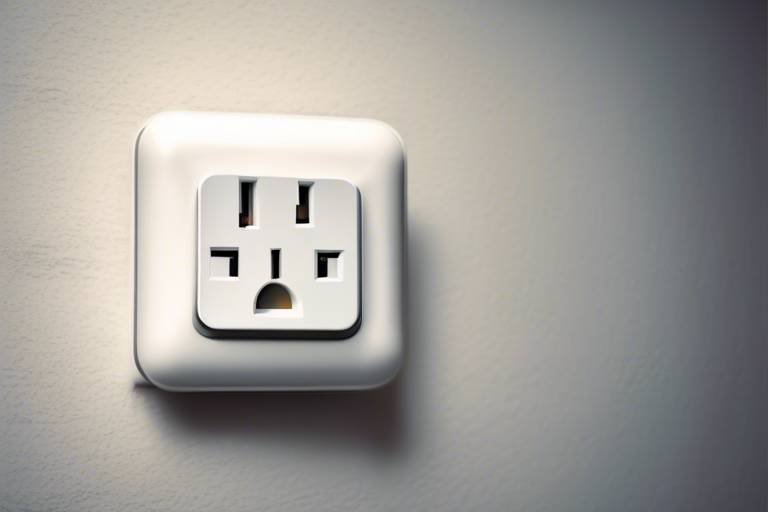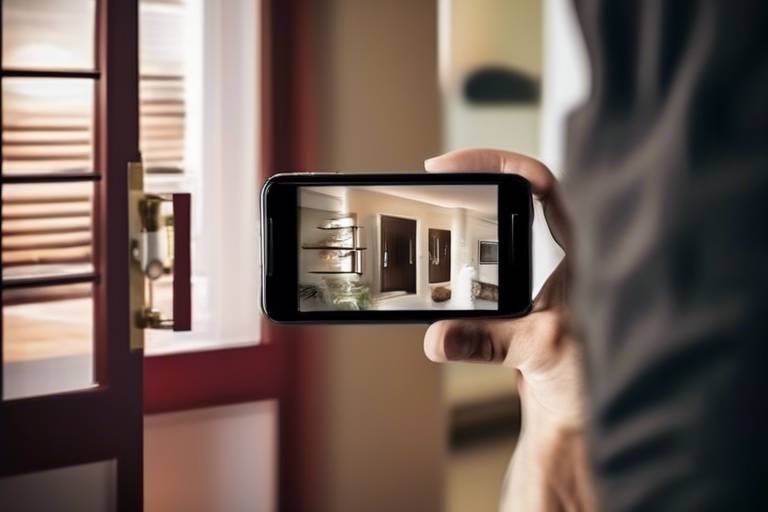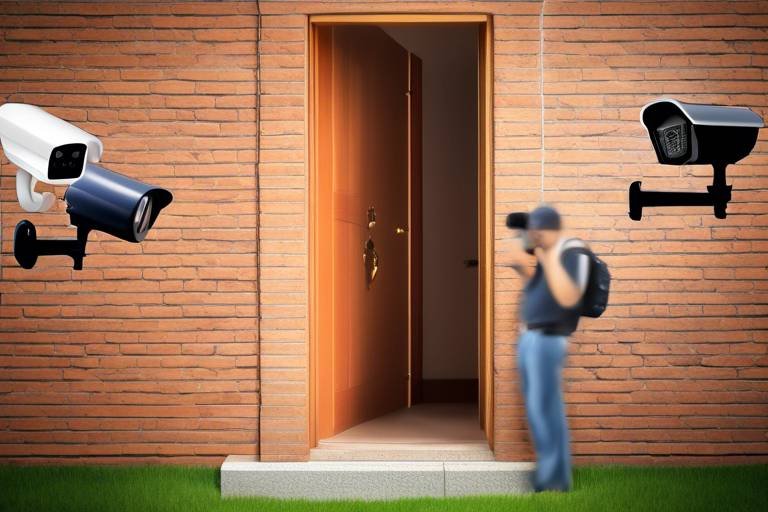Guide to Home Security for Pet Owners
As a pet owner, your furry friends are not just companions; they are family. Ensuring their safety while maintaining a secure home environment can feel like a balancing act. In this comprehensive guide, we’ll delve into essential home security measures tailored specifically for pet owners. We understand that your pets have unique needs and vulnerabilities, so we’ll explore tips, strategies, and products that enhance security without compromising their comfort. From understanding specific risks to selecting the right security system, we’ve got you covered!
Pet owners face a myriad of unique security challenges that can often go unnoticed. For instance, curious pets might find escape routes through open windows, doors, or even small gaps in your fencing. Additionally, the presence of intruders can pose serious risks not only to you but to your beloved pets as well. It’s crucial to identify and address these vulnerabilities in your home environment. Consider these common risks:
- Open Windows and Doors: Pets can easily slip out if windows or doors are left ajar.
- Weak Fencing: A fence that’s not secure can become a quick exit for adventurous pets.
- Intruder Access: Unsecured entry points can lead to unwanted guests, putting both you and your pets in danger.
By recognizing these potential hazards, you can take proactive steps to fortify your home and keep your furry companions safe.
Selecting a home security system can be an overwhelming task, especially with so many options available. However, as a pet owner, it’s essential to choose features that cater specifically to your needs. Look for systems that include pet-friendly motion detectors and surveillance cameras designed to minimize false alarms while effectively monitoring your home. These features not only help in securing your property but also ensure that your pets are safe and sound.
Not all alarm systems are created equal when it comes to pet owners. Some systems can be overly sensitive, triggering false alarms every time your pet moves. To avoid this frustration, consider options that are designed with pets in mind. These systems can differentiate between human and animal movement, ensuring that your home remains secure without unnecessary disturbances. Look for features such as:
- Weight Sensitivity: Systems that adjust sensitivity based on the weight of your pets.
- Motion Detection Zones: Ability to set specific areas for detection, avoiding pet-heavy zones.
By selecting the right alarm system, you can enjoy peace of mind knowing that your home is protected while your pets roam freely.
Understanding how motion sensors work is crucial for pet owners. These sensors can be a double-edged sword; while they enhance security, they can also cause unnecessary alarms if positioned incorrectly. To avoid triggering alarms while keeping your home secure, consider these tips:
- Place sensors high enough to avoid detecting smaller pets.
- Adjust the sensitivity settings according to your pet’s size and activity level.
- Use curtains or furniture to block direct paths to the sensors.
By strategically positioning your motion sensors, you can maintain a secure environment without compromising your pet’s freedom.
Utilizing video surveillance can significantly enhance your home security. With modern technology, you can monitor your pets and property from anywhere via your smartphone. Look for camera systems that offer features like:
- Two-Way Audio: Communicate with your pets while you’re away.
- Night Vision: Keep an eye on your pets even in low light conditions.
- Motion Alerts: Receive notifications when movement is detected.
These camera systems not only help in keeping your pets safe but also give you peace of mind knowing that you can check in on them anytime.
Fencing and outdoor security measures are vital for pet safety. A well-secured yard can prevent your pets from escaping and deter intruders. Consider the following best practices for securing your outdoor spaces:
- Install a High Fence: Ensure your fence is tall enough to prevent jumping.
- Check for Gaps: Regularly inspect your fence for holes or weak spots.
- Use Locks: Always lock gates to prevent unauthorized access.
By taking these preventive measures, you create a safe haven for your pets while keeping potential threats at bay.
Safety inside the home is just as important as outdoor security. A pet-proofed living space reduces hazards and enhances overall security. Start by identifying potential dangers such as:
- Sharp Objects: Keep knives and scissors out of reach.
- Electrical Cords: Secure cords to prevent chewing.
- Toxic Plants: Remove any plants that are harmful to pets.
By creating a safe indoor environment, you not only protect your pets but also foster a sense of security for yourself.
Keeping valuables secure is essential in any household, but it’s even more critical when you have pets. Consider effective strategies for storing items safely while ensuring your pets can move freely within the home. Use cabinets with child-proof locks for hazardous materials and keep important documents in a secure, pet-proof area. The goal is to minimize risks while allowing your pets to enjoy their space comfortably.
Preparing for emergencies is crucial for pet owners. Whether it’s a natural disaster or a sudden home invasion, having a plan in place can make all the difference. Here’s how to create an emergency plan that includes your pets:
- Emergency Kit: Assemble a kit with food, water, medications, and comfort items for your pets.
- Safe Spaces: Designate safe areas in your home where pets can go during emergencies.
- Identification: Ensure your pets have proper identification, such as microchips or tags.
By being prepared, you ensure the safety and comfort of your pets during unexpected situations.
Q: How can I prevent my pet from escaping my yard?
A: Ensure your fence is tall and secure, check for gaps, and consider using a leash or harness when outside.
Q: What should I do if my pet triggers the alarm system?
A: Look for pet-friendly alarm systems that minimize false alarms, and position motion sensors strategically.
Q: How can I monitor my pets while I'm away from home?
A: Invest in a video surveillance system that allows you to check in on your pets remotely.

Understanding Pet-Specific Security Risks
As a pet owner, you might think that your primary concern is keeping your furry friend happy and healthy. However, there's a whole world of security risks that can pose a threat to both your pets and your home. Understanding these risks is the first step in creating a safe environment for your beloved companions. For instance, did you know that pets can be expert escape artists? They might find a way to slip through a loose fence or dart out an open door, leaving them vulnerable to traffic or other dangers. It's essential to identify potential escape routes in your home and yard.
Moreover, the presence of intruders can be particularly alarming for pet owners. Imagine coming home to find your pet in a panic because someone has broken in. Not only is your home compromised, but your pet's safety is also at risk. It's crucial to recognize that pets can react unpredictably in stressful situations, which can lead to accidents or injuries. Therefore, understanding how to secure your home against intruders while keeping your pets calm is vital.
In addition to escape routes and intruder risks, there are other vulnerabilities to consider. For example, many pet owners overlook the importance of securing windows and balconies. Curious cats and adventurous dogs can easily find their way to dangerous heights or escape through unsecured openings. This is where comprehensive security measures come into play. By assessing your home for these pet-specific risks, you can implement effective solutions that cater to both your security needs and your pet's comfort.
To help you visualize the common risks, here’s a quick overview:
| Risk | Description | Solution |
|---|---|---|
| Escape Routes | Loose fences or open doors that allow pets to escape. | Secure fencing and always check doors before leaving. |
| Intruder Threats | Potential for break-ins that can scare pets and endanger their safety. | Install security systems and reinforce entry points. |
| Unsecured Windows | Windows that can be opened or broken, allowing pets to fall or escape. | Use window locks and screens to prevent access. |
Ultimately, being proactive about these risks not only protects your home but also ensures that your pet feels safe and secure. By taking the time to assess your living environment and implementing the right security measures, you can create a sanctuary where both you and your furry friends can thrive.

Choosing the Right Home Security System
When it comes to protecting your home and your furry friends, selecting the right home security system can feel like searching for a needle in a haystack. With a plethora of options available, how do you ensure that your choice not only safeguards your property but also accommodates the needs of your pets? It's a bit like finding the perfect pair of shoes; they need to fit well, be comfortable, and serve their purpose without causing any discomfort. Here are some key features to consider:
Pet-Friendly Motion Detectors are a game changer for pet owners. Traditional motion sensors can often be triggered by the innocent antics of your pets, leading to a barrage of false alarms that can drive you—and your pets—crazy. Thankfully, many modern systems come equipped with pet-immune technology, allowing them to differentiate between the movements of humans and pets. This means you can enjoy peace of mind knowing that your security system is on guard without the constant interruptions.
Another essential feature is video surveillance. Imagine being able to check in on your pets while you're away, ensuring they're safe and sound. Look for systems that offer high-definition video, night vision capabilities, and mobile access. This way, whether you're at work or out for a night on the town, you can keep an eye on your furry companions. Plus, many systems allow you to set up alerts for unusual activity, adding another layer of security.
Now, let’s talk about the integration of smart home technology. Many security systems can now be integrated with smart home devices, such as thermostats, lights, and even pet feeders. This not only enhances your home security but also allows you to create a comfortable environment for your pets. For instance, you can set your security camera to turn on when you leave home, ensuring that your pets are monitored at all times, while also adjusting your thermostat to keep them comfortable.
Before making a decision, it's wise to assess your home's layout and your pets' behaviors. For instance, if you have a large dog that loves to roam, you might want a system that includes outdoor cameras and robust perimeter security. Alternatively, if you have smaller pets that tend to stay indoors, a comprehensive indoor system with motion detectors and cameras may suffice. The key is to tailor your security system to your specific needs.
To help you visualize the various options, here's a simple comparison table of popular home security systems for pet owners:
| System Name | Pet-Friendly Features | Video Surveillance | Smart Home Integration |
|---|---|---|---|
| System A | Pet-immune motion sensors | Yes, HD with night vision | Compatible with Alexa and Google Home |
| System B | Adjustable detection zones | Yes, mobile app access | Works with smart locks and lights |
| System C | Pet-friendly settings | Yes, 24/7 monitoring | Integrates with various smart devices |
In conclusion, choosing the right home security system goes beyond just picking the most popular option. It’s about finding a system that works harmoniously with your lifestyle and the needs of your pets. Take your time, do your research, and don’t hesitate to ask for recommendations. After all, your pets deserve a safe and secure home just as much as you do!
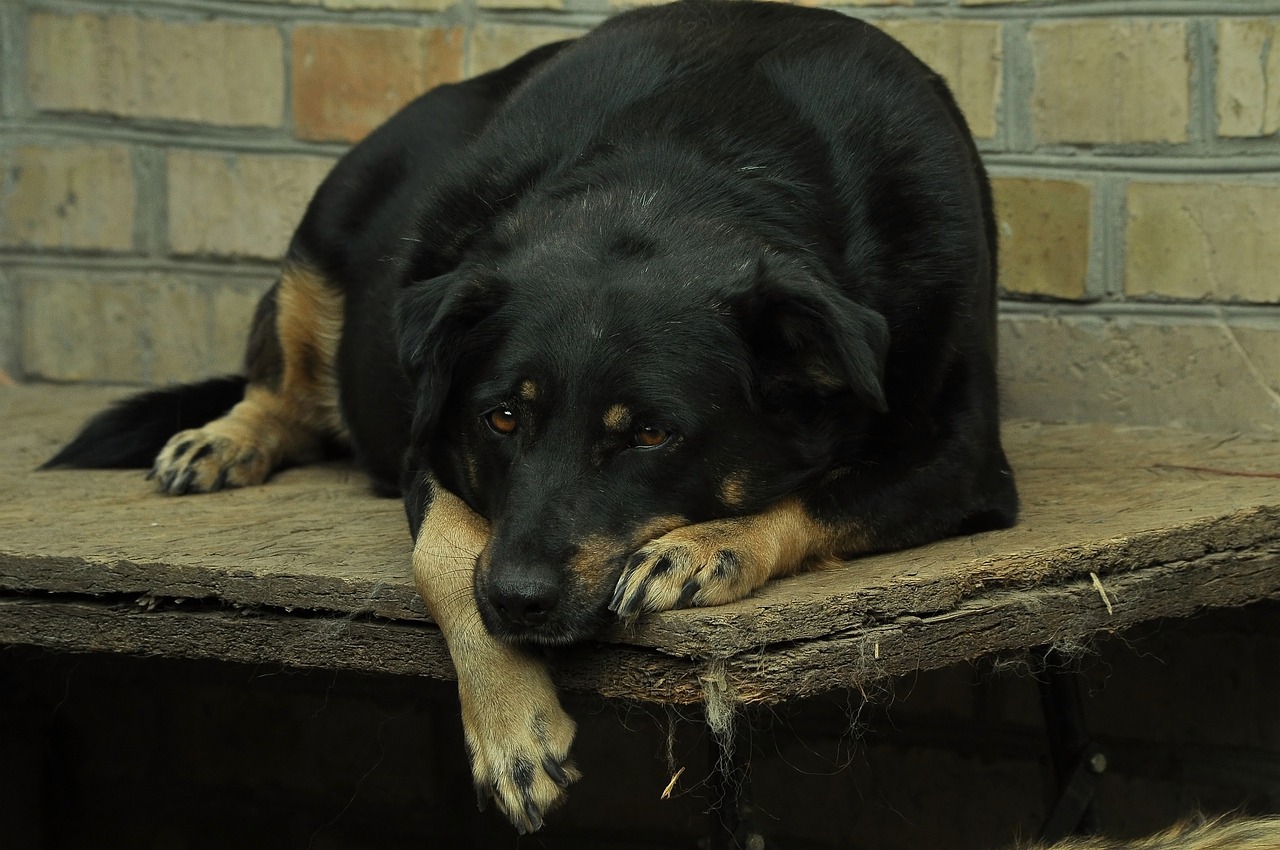
Pet-Friendly Alarm Systems
When it comes to keeping your home secure, pet owners often find themselves in a bit of a pickle. Traditional alarm systems can be a double-edged sword; while they provide essential protection against intruders, they can also lead to a barrage of false alarms triggered by your beloved pets. Imagine this: you’re at work, your cat decides to leap off the couch, and suddenly, the police are at your door! That’s why investing in is not just a smart choice, but a necessity for anyone with furry companions.
So, what exactly makes an alarm system "pet-friendly"? First off, these systems are designed with technology that can distinguish between human movement and that of pets. This means you won’t have to worry about your dog’s afternoon zoomies setting off the alarm. Many modern systems utilize advanced motion sensors that can be calibrated to ignore smaller animals, typically those under a certain weight—usually around 40 pounds. This feature is invaluable for households with multiple pets or larger breeds that are still active and playful.
Another great feature of pet-friendly alarm systems is the integration of smart technology. Many systems can connect to your smartphone, allowing you to monitor your home in real-time. Imagine being able to check in on your pets while you’re out and about! You can receive instant alerts if the system detects unusual activity, giving you peace of mind. Some systems even allow for two-way communication, so you can talk to your pets and reassure them if they’re feeling anxious.
But wait, there’s more! Let’s take a moment to look at some popular options available in the market:
| Alarm System | Pet-Friendly Features | Price Range |
|---|---|---|
| Ring Alarm | Adjustable motion sensors, smart notifications | $199 - $399 |
| SimpliSafe | Paw-friendly motion sensors, customizable settings | $229 - $499 |
| ADT | Pet-sensitive motion detectors, remote monitoring | $300 - $600 |
It’s essential to consider your specific needs when choosing a pet-friendly alarm system. For instance, if you have a particularly curious cat who loves to explore, you might want a system that allows for more extensive customization of its settings. Additionally, consider whether you want a DIY system or one that requires professional installation. Each has its pros and cons, and the right choice often depends on your comfort level with technology.
In conclusion, investing in a pet-friendly alarm system is a proactive step in ensuring the safety of both your home and your furry friends. Not only do these systems help prevent intrusions, but they also provide peace of mind, knowing that your pets can roam freely without triggering unnecessary alarms. So, whether you’re a dog lover or a cat enthusiast, make sure to choose a system that caters to your unique household dynamics.
- What is a pet-friendly alarm system? A pet-friendly alarm system is designed to minimize false alarms caused by pets while still providing effective security against intruders.
- How does a pet-friendly alarm system work? These systems use advanced motion sensors that can differentiate between human movement and that of pets, typically ignoring smaller animals.
- Can I monitor my pets with a security system? Yes, many modern alarm systems offer video surveillance features that allow you to keep an eye on your pets remotely.
- Are pet-friendly alarm systems more expensive? While they may cost a bit more than standard systems, the peace of mind they provide is often worth the investment.

Motion Sensors and Pets
When it comes to home security, motion sensors play a pivotal role, but for pet owners, they can be a double-edged sword. You want your home to be secure from intruders, yet you also want to avoid the constant nuisance of false alarms triggered by your furry friends. Understanding how motion sensors work and how to position them effectively can make all the difference in creating a secure environment without compromising your pets' freedom.
Most motion sensors use infrared technology to detect body heat or movement. This means that if your pet is roaming around, they can easily set off the alarm. To mitigate this, consider installing pet-friendly motion sensors that are specifically designed to ignore smaller animals. These sensors can distinguish between the size and weight of pets and humans, significantly reducing the likelihood of false alarms. Before purchasing, check the specifications to ensure they are suitable for your pet's size.
Another important aspect of positioning your motion sensors is the placement. Ideally, you should install them in areas where your pets do not typically roam. For instance, placing sensors high on walls or in corners can help minimize the chance of your pet triggering them. Here are a few tips for optimal placement:
- Height Matters: Mount sensors at least 7 feet high to avoid activation from smaller pets.
- Avoid High Traffic Areas: Keep sensors away from areas where pets frequently pass, like hallways or living rooms.
- Use Multiple Sensors: Consider using several sensors to cover larger areas without relying on a single point of detection.
Moreover, integrating motion sensors with your home automation system can provide added benefits. For example, if a sensor is triggered, you can receive real-time notifications on your smartphone. This way, you can check in on your pets through a connected camera, ensuring they are safe and sound. Not only does this enhance your peace of mind, but it also allows you to monitor your home environment more effectively.
In conclusion, while motion sensors are a fantastic addition to your home security system, pet owners must be mindful of their unique challenges. By selecting the right type of sensors, positioning them wisely, and integrating them into a broader security system, you can create a safe haven for both your home and your beloved pets.
- Can motion sensors be adjusted for pet size? Yes, many modern motion sensors come with settings that allow you to adjust sensitivity based on the size of your pets.
- How can I prevent false alarms from my pets? Positioning sensors at a higher elevation and using pet-friendly models can significantly reduce false alarms.
- Are there motion sensors that work with home automation systems? Absolutely! Many motion sensors are compatible with home automation systems, allowing for seamless integration and monitoring.

Video Surveillance Solutions
When it comes to ensuring the safety of your home and the well-being of your pets, are a game changer. Imagine being able to keep an eye on your furry friends while you're away, all from the convenience of your smartphone or tablet. With advancements in technology, modern surveillance systems are not only more accessible but also incredibly user-friendly. So, what should you look for in a video surveillance system that caters specifically to pet owners?
First and foremost, consider cameras that offer high-definition video quality. This ensures that you can clearly see what your pets are up to, whether they're lounging on the couch or getting into a little mischief. Additionally, look for systems with night vision capabilities. Pets can be quite active during the night, and having a camera that can capture clear images in low light will give you peace of mind.
Another feature to consider is two-way audio. This allows you to not only see your pets but also communicate with them. Imagine calling your dog to come inside or soothing your anxious cat with your voice while you're at work. It's like having a virtual presence in your home, which can be incredibly comforting for both you and your pets.
Many modern video surveillance systems also come equipped with motion detection alerts. This means you’ll receive notifications on your phone if there’s any unusual movement detected in your home. You can set these alerts to ignore your pets' movements, minimizing false alarms while still keeping an eye on potential intruders. Positioning your cameras strategically is crucial; place them in areas where your pets spend the most time, such as the living room or near the entrance.
Let's take a look at some popular video surveillance options that are pet-friendly:
| Camera Model | Key Features | Price Range |
|---|---|---|
| PetCam 360 | HD video, night vision, two-way audio | $100 - $150 |
| Furbo Dog Camera | HD video, treat dispenser, barking alerts | $150 - $200 |
| Ring Indoor Cam | 1080p HD video, motion-activated notifications | $60 - $100 |
As you can see, there are numerous options available that cater specifically to the needs of pet owners. When selecting a video surveillance solution, it's essential to consider not only the features that will help you monitor your pets but also how these systems integrate into your overall home security setup. A well-rounded approach to security will ensure that both your home and your beloved companions are safe and sound.
In conclusion, investing in a reliable video surveillance system can provide you with peace of mind, knowing you can check in on your pets anytime, anywhere. Whether it's to ensure they're safe, to catch a funny moment, or to deter potential intruders, video surveillance is a smart choice for any pet owner.
- Can I access my surveillance camera remotely? Yes, most modern video surveillance systems allow you to access live feeds through a mobile app.
- What happens if my Wi-Fi goes down? Many systems have local storage options, so footage is saved even if the internet is down.
- Are there any pet-specific cameras? Yes, several cameras are designed specifically for pet monitoring, featuring treat dispensers and interactive elements.
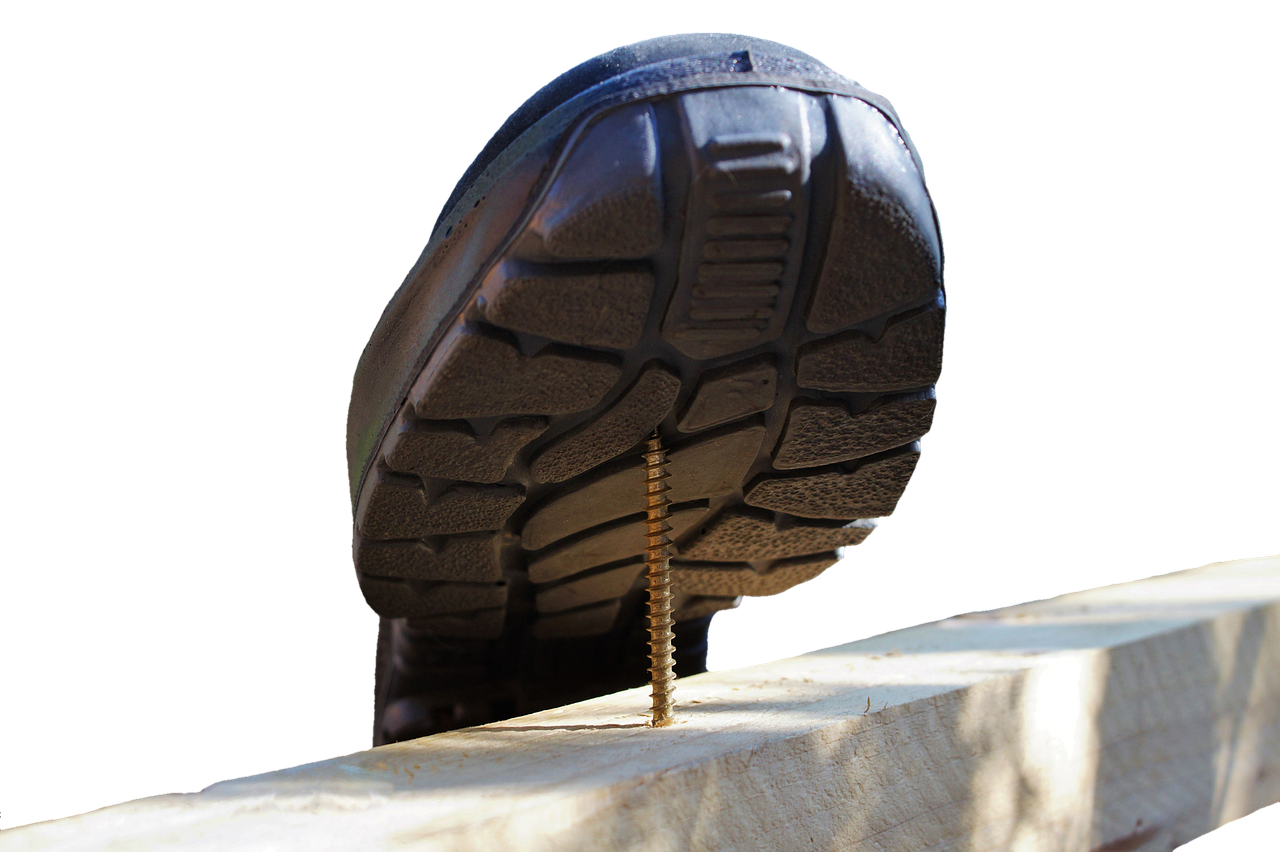
Securing Outdoor Spaces
When it comes to , pet owners face a unique set of challenges. Your furry friends are naturally curious, and their desire to explore can lead to potential escapes or encounters with unwelcome visitors. To create a safe and secure environment for your pets, it's essential to implement a few strategic measures that not only protect your home but also allow your pets to enjoy the great outdoors without worry.
First and foremost, fencing is a critical element in outdoor security. A sturdy fence not only keeps your pets contained but also acts as a deterrent to intruders. However, not all fences are created equal. It's important to consider the height and materials of your fencing. For instance, a fence that is at least six feet tall is generally recommended for larger breeds that might try to jump over. Additionally, you should ensure that the fence is buried a few inches underground to prevent any digging attempts by your pets.
Moreover, the type of fence you choose can also play a significant role in both security and aesthetics. Here’s a quick comparison of popular fencing options:
| Fence Type | Pros | Cons |
|---|---|---|
| Wood | Durable, customizable | Requires maintenance, can rot |
| Vinyl | Low maintenance, long-lasting | Higher upfront cost |
| Chain Link | Cost-effective, easy to install | Less privacy, can rust |
| Electric | Highly secure, adjustable | Requires power, can be costly |
In addition to fencing, consider installing gates that are secure and pet-proof. Gates should be at least as tall as your fence and have a lock mechanism that is difficult for pets to manipulate. A well-secured gate will prevent your pets from wandering off while also keeping unwanted animals or intruders at bay.
Another aspect to think about is the landscaping around your home. Certain plants can be toxic to pets, so it's wise to choose pet-friendly plants for your garden. Additionally, ensure that there are no gaps or holes in your landscaping that could provide an escape route for your pets. Regularly inspect your outdoor area for any weak points, like loose boards or damaged fencing, and address them promptly.
Finally, consider adding surveillance cameras to your outdoor security measures. Not only can these cameras help you monitor your pets while they’re outside, but they can also act as a deterrent for potential intruders. Many modern systems allow you to view live feeds from your smartphone, giving you peace of mind no matter where you are.
By taking these steps to secure your outdoor spaces, you can create a safe haven for your pets to enjoy the outdoors while keeping your home protected. Remember, a little preparation goes a long way in ensuring the safety and happiness of your furry companions.
- What type of fence is best for large dogs? A tall wooden or vinyl fence is generally recommended for larger breeds, as they are sturdy and can prevent jumping.
- How can I prevent my pet from digging under the fence? Burying the bottom of the fence a few inches underground can deter digging, or consider adding a concrete footer for extra security.
- Are there any plants I should avoid in my garden? Yes, some common plants like azaleas, lilies, and sago palms are toxic to pets. Always check before planting.
- Can surveillance cameras help with pet safety? Absolutely! They allow you to monitor your pets' activities and can provide evidence in case of any security issues.

Creating a Safe Indoor Environment
When it comes to our beloved pets, creating a safe indoor environment is just as crucial as securing the outside of our homes. Think of your living space as a fortress, where every nook and cranny is designed to protect your furry friends from potential hazards. But what does that really mean? Well, it starts with understanding the common risks that can lurk within our homes. From toxic plants to small objects that can be swallowed, ensuring your home is pet-proof is essential for their safety and your peace of mind.
One of the first steps in this journey is to identify and eliminate hazards. Take a good look around your home and ask yourself: are there any items that could pose a danger to my pet? This could include things like cleaning supplies, medications, or even certain types of food that are toxic to animals. Make sure to store these items in high cabinets or locked drawers where your curious companions can’t reach them. Additionally, be cautious with electrical cords; consider using cord protectors to prevent your pets from chewing on them. It’s like setting up a safety net, ensuring that your pets can explore their environment without the risk of injury.
Another important aspect of creating a safe indoor environment is furnishing wisely. Opt for furniture that is sturdy and doesn’t have sharp edges. If you have a rambunctious puppy, for instance, a glass coffee table might not be the best choice. Instead, consider rounded edges or materials that can withstand a bit of roughhousing. Additionally, keep an eye on decorative items like candles or fragile ornaments; they can easily become casualties of a playful tail or a curious paw. By choosing pet-friendly furnishings, you’re not just enhancing your home’s aesthetics; you’re also ensuring that your pets can roam freely without the risk of knocking things over or getting hurt.
Furthermore, it’s essential to create designated areas for your pets within your home. Think of it as their personal sanctuary where they can feel safe and comfortable. This could be a cozy corner with their bed, toys, and a water bowl. By providing a space that’s solely theirs, you not only help them feel secure but also encourage them to stay away from areas that might be less safe. It’s like giving them their own little kingdom to rule, where they can relax without worry.
For those of you who have multiple pets, managing their interactions is also key to maintaining a harmonious home. Sometimes, pets can get a little too excited, leading to playful scuffles that might escalate. To avoid any potential chaos, consider setting up barriers or gates to separate areas when necessary. This allows each pet to have their own space while still being part of the family unit. Just like in a well-orchestrated dance, every pet has their role, and ensuring they have their own space can prevent any missteps.
Lastly, let’s not forget about the importance of emergency preparedness. Accidents can happen, and being ready for them can make all the difference. Create an emergency plan that includes your pets. This means having a pet first-aid kit on hand, knowing where the nearest veterinary clinic is located, and having a list of emergency contacts. It’s like having an insurance policy for your peace of mind. You can also consider microchipping your pets or having them wear ID tags with your contact information. In the event of an emergency, this simple step can be a lifesaver, ensuring that your pets can be quickly returned to you.
- What should I do if my pet chews on something dangerous?
If you catch your pet chewing on something harmful, gently remove it from their mouth and monitor them for any signs of distress. If you’re concerned, contact your veterinarian immediately. - How can I pet-proof my home on a budget?
Start by decluttering and removing any small items that could be swallowed. Use furniture you already own wisely and invest in affordable storage solutions to keep hazardous items out of reach. - What are some common household items that are toxic to pets?
Common items include chocolate, grapes, onions, and certain plants like lilies and azaleas. Always research before bringing new plants or foods into your home.

Locking Up Valuables
As a pet owner, ensuring your furry friends are safe is a top priority, but that doesn't mean you should neglect the security of your valuables. In fact, is a crucial aspect of home security that often gets overlooked. Think about it: when your pet is roaming around, they can unintentionally create situations that could lead to accidents or theft. For instance, a curious cat might knock over a precious vase, or a playful dog could chew on important documents left lying around. Therefore, it’s essential to implement strategies that not only protect your belongings but also allow your pets to move freely and safely.
One effective way to secure your valuables is by investing in lockable storage solutions. This could be anything from a simple drawer lock to a more sophisticated safe. Consider using a safe for items like jewelry, important documents, and cash. Safes come in various sizes and security levels, so choose one that fits your needs. Remember, the goal is to keep these items out of reach from both potential intruders and your inquisitive pets.
Moreover, it's vital to think about the layout of your home. Keep valuable items in secure areas that are less accessible to pets. For example, you might want to place fragile items on high shelves or in rooms that your pets cannot access. This not only prevents your pets from causing damage but also reduces the risk of theft. If you have a designated space for valuables, consider using hidden compartments or furniture with built-in storage to keep them out of sight.
Additionally, consider the following tips for locking up valuables in a pet-friendly manner:
- Use child-proof locks: These can be effective in keeping curious pets from accessing cabinets and drawers.
- Secure cords and cables: Pets often chew on electrical cords, which can be dangerous. Use cord organizers or cable covers to keep them safe.
- Designate a pet-free zone: Create areas in your home where valuables are stored and pets are not allowed. This can be a room or a section of your home that is kept off-limits.
By implementing these strategies, you can create a harmonious environment where both your valuables and pets are secure. Remember, the key is to find a balance that allows your pets to feel at home while also protecting your belongings. After all, a secure home is a happy home, and ensuring both your pets and valuables are safe will give you peace of mind.
Q: What types of storage solutions are best for pet owners?
A: Look for lockable cabinets, safes, and furniture with hidden storage. Child-proof locks can also be effective.
Q: How can I prevent my pet from accessing valuable items?
A: Keep valuable items in high or locked places, and designate pet-free zones within your home.
Q: Are there any specific types of safes recommended for pet owners?
A: Choose a safe that is heavy and difficult for pets to move, or consider a wall-mounted safe that is out of reach.

Emergency Preparedness for Pets
When it comes to our furry friends, being prepared for emergencies is not just a good idea—it's essential. Imagine a sudden storm, a fire, or even an unexpected evacuation; the last thing you want is to be scrambling to ensure your pet's safety while chaos ensues. That's why having an emergency plan that includes your pets is crucial. Start by creating a pet emergency kit, which should be easily accessible and contain all the essentials your pet might need in a crisis.
Your emergency kit should include items such as food, water, medications, and a first aid kit tailored for pets. Additionally, don’t forget to add copies of important documents like vaccination records and identification. It's wise to have a sturdy leash and a comfortable carrier for your pet, ensuring you can transport them safely if needed. Think of this kit as a miniature survival bag for your pet—just like you would prepare for yourself, they deserve the same level of care.
Next, consider your evacuation plan. Familiarize yourself with pet-friendly shelters in your area, and know how to reach them quickly. If you have to leave your home, you want to be able to grab your pet and go without hesitation. It's also a good idea to practice your evacuation plan with your pet, so they become accustomed to the routine. You wouldn't want to be in a stressful situation trying to coax your scared cat out from under the bed, right?
In addition to physical preparations, don’t overlook the importance of training. Teaching your pet basic commands can be incredibly helpful during emergencies. Commands like "come," "stay," and "leave it" can make a world of difference when you need your pet to respond quickly. Think of it as a way to communicate effectively under pressure; a well-trained pet will be more likely to follow your lead when every second counts.
Lastly, consider creating a pet emergency contact list that includes your veterinarian, local animal hospitals, and trusted friends or family who can help in a crisis. This way, you have a go-to list of resources when things get tough. You might even want to keep a printed copy in your emergency kit, just in case your phone is out of reach or the battery dies.
In summary, being prepared for emergencies with your pets involves a mix of planning, training, and having the right supplies. By taking these steps, you can ensure that both you and your furry companions are ready to face whatever challenges may come your way. After all, a little preparation goes a long way in keeping your pets safe and secure.
- What should I include in a pet emergency kit? Your kit should contain food, water, medications, first aid supplies, a leash, a carrier, and important documents.
- How can I prepare my pet for an emergency evacuation? Familiarize your pet with the carrier, practice evacuation drills, and ensure they know basic commands.
- Are there pet-friendly shelters available? Yes, research local shelters that accommodate pets and keep their contact information handy.
- What essential documents should I have for my pet? Vaccination records, identification, and any medical history are important to keep on hand.
Frequently Asked Questions
- What are the common security risks for pet owners?
Pet owners often face unique security challenges, such as pets escaping through open doors or windows, as well as the potential for intruders to target homes with animals. Identifying these vulnerabilities—like unsecured fences or easily accessible exits—can help you fortify your home.
- How do I choose a home security system that is pet-friendly?
When selecting a home security system, look for features designed specifically for pet owners. Systems with pet-friendly motion detectors, which can differentiate between pets and humans, are ideal. Additionally, consider surveillance cameras that allow you to monitor your pets while keeping an eye on your property.
- What can I do to prevent false alarms with my security system?
To minimize false alarms, position motion sensors at heights that are less likely to be triggered by pets. Some systems allow you to adjust the sensitivity settings, which can be helpful. Also, consider using pet-friendly alarm systems that are designed to ignore small animals.
- How can I secure my outdoor spaces for my pets?
Securing your yard is crucial for both pet safety and home security. Installing a sturdy fence that is tall enough to deter jumping and ensuring there are no gaps or weak points can prevent escapes. Additionally, consider motion-activated lights and cameras to monitor outdoor areas.
- What should I do to pet-proof my home?
Pet-proofing your home involves securing hazardous items, such as cleaning supplies and sharp objects, out of reach. Additionally, ensure that windows and doors are properly locked, and consider using gates to restrict access to certain areas. This creates a safer environment for your pets while enhancing overall security.
- How can I prepare for emergencies with my pets?
Creating an emergency preparedness plan is essential for pet owners. Make sure you have a pet emergency kit that includes food, water, medications, and a leash. Additionally, practice evacuation routes with your pets and ensure they are familiar with carriers or crates, so they can be transported safely if needed.





